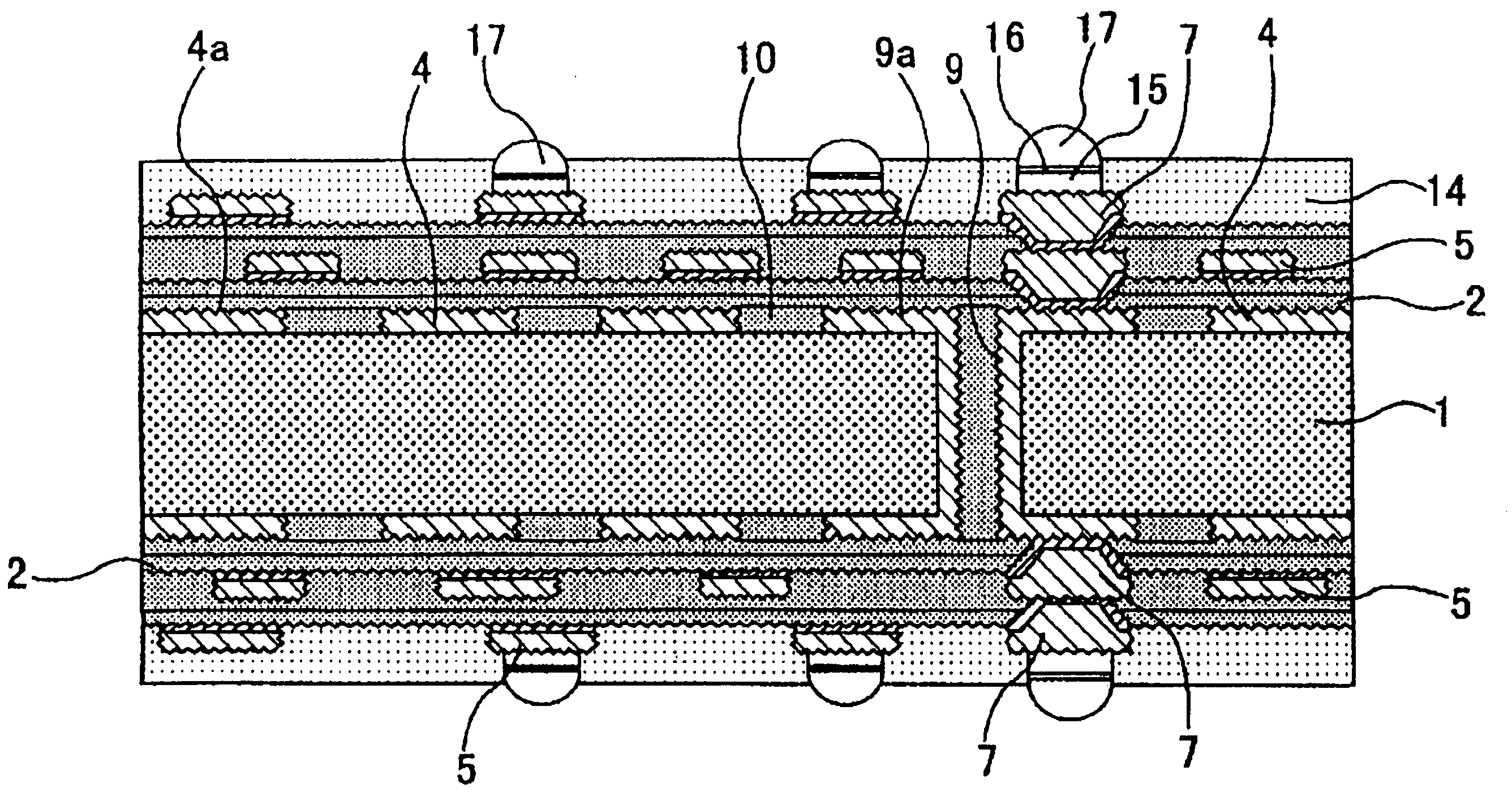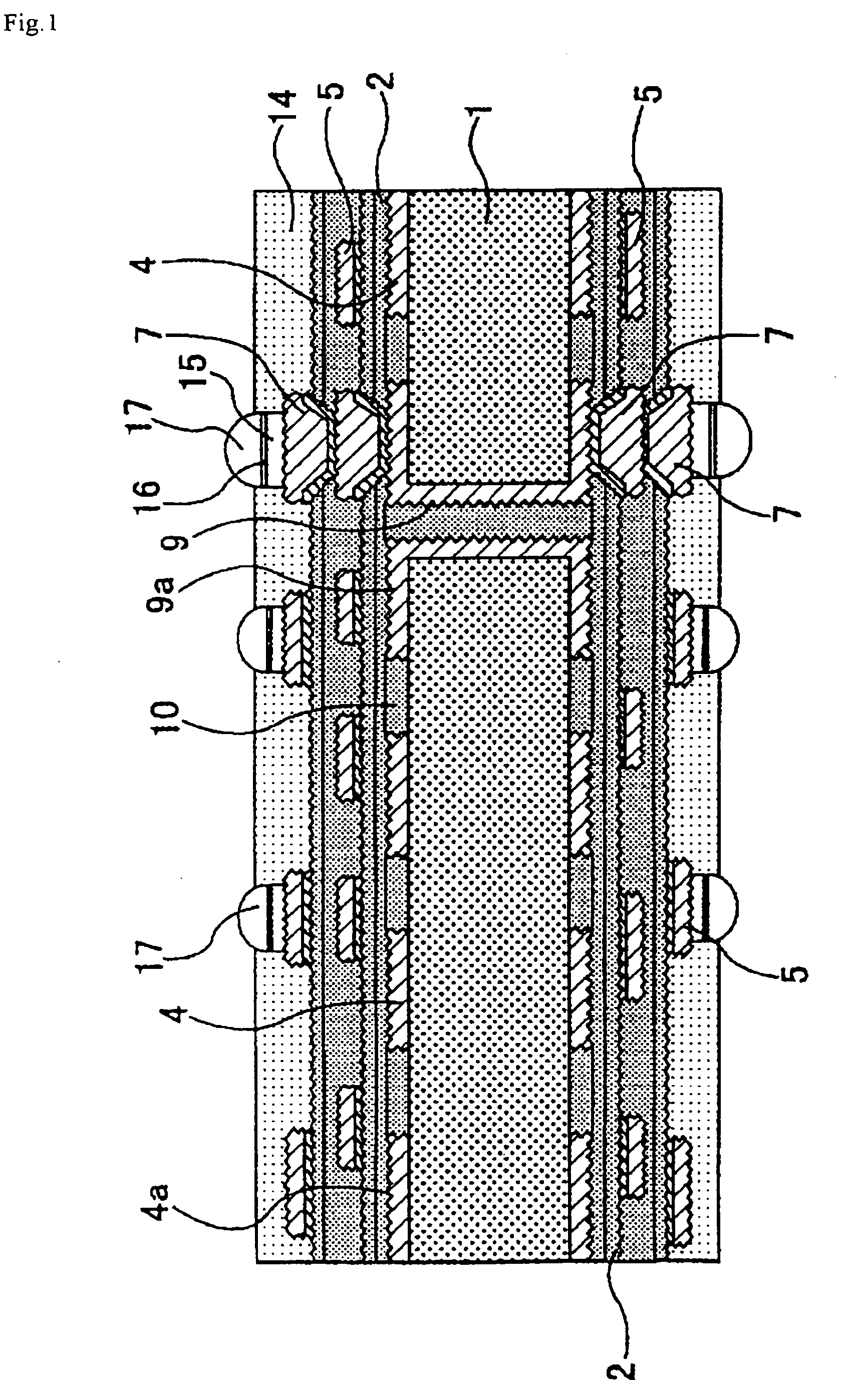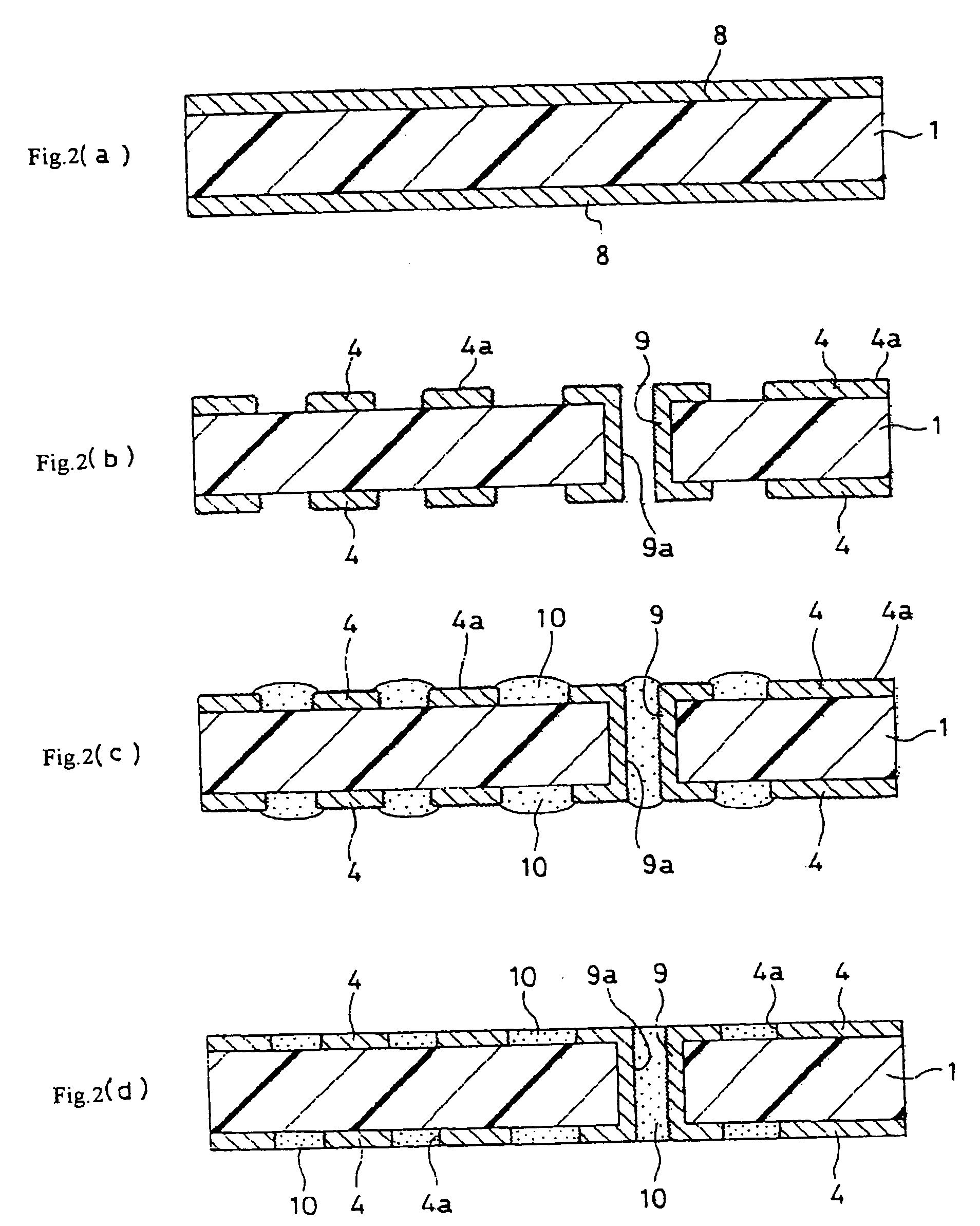Electroplating solution, method for manufacturing multilayer printed circuit board using the same solution, and multilayer printed circuit board
- Summary
- Abstract
- Description
- Claims
- Application Information
AI Technical Summary
Benefits of technology
Problems solved by technology
Method used
Image
Examples
example 1
[0224] A. Preparation of a Resin Composite (an Adhesive for an Upper Layer)
[0225] (i) A mixture composition was produced by blending 35 parts by weight of a resin solution produced by dissolving 80 wt. % of a cresol novolak type epoxy resin acrylated in 25% (made by Nippon Kayaku Co., Ltd.: molecular weight 2,500) in diethylene glycol dimethyl ether (DMDG), 3.15 parts by weight of a photosensitive monomer (made by Toagosei Chemical Industry Co., Ltd.: Aronix M 315), 0.5 parts by weight of a defoaming agent (made by San Nopco Ltd.: S-65), and 3.6 parts by weight of N-methylpyrrolidone (NMP) in a container and mixing and stirring them.
[0226] (ii) Another mixture composition was produced by blending 12 parts by weight of polyether sulfone (PES), 7.2 parts by weight of an epoxy resin particle (made by Sanyo Chemical Industries, Ltd.: Polymerpol) with the average particle size of 1.0 μm and 3.09 parts by weight of the particle with the average particle size of 0.5 μm in another contain...
example 2
[0267] A. A Method for Manufacturing a Printed Circuit Board
[0268] (1) A copper-laminated laminate plate composed of a substrate 1 which is made of a 0.8 mm-thick glass epoxy resin or BT (bismaleimide triazine) resin with a 18 μm-thick copper foil 8 laminated on both sides of the substrate 1 was used as a starting material (reference to FIG. 8(a)). At first, the copper-laminated laminate plate was drilled to form a through hole, subjected to electroless plating treatment and then etching treatment in a pattern to form an under-level conductor circuit 4 in both sides of the substrate 1 and a plated-through hole 9.
[0269] (2) After the resultant substrate in which the plated-through hole 9 and the under-level conductor circuits 4 are formed was washed with water and dried, the following etching solution was sprayed to both sides of the substrate to etch the under-level conductor circuits 4 and the land surface and the inner wall of the plated-through hole 9 and form roughened surface...
example 3
[0294] A. A Method for Manufacturing a Printed Circuit Board
[0295] (1) In the same manner as the processes (1) to (8) of the example 1, a substrate bearing conductor circuits 4 and resin insulating layers 2 was produced and after that, an electroless copper plating film 12 was formed in the same manner as the process (9) of the example 1 (reference FIG. 14(a) to FIG. 16 (a)).
[0296] (2) A photosensitive dry film sold on the market was stuck to the electrolytic copper plating film 12, a mask was put thereon, exposure was carried out at 100 mJ / cm2, and development treatment was carried out with an aqueous solution of 0.8% sodium carbonate to form a plating resist 23 with the thickness of 15 μm (reference FIG. 16(b)).
[0297] (3) Next, electroplating of the parts where no plating resist 23 was formed was carried in the following conditions to form an electroplating film 13 with the thickness of 7.5 μm (reference to FIG. 15(c)):
[0298] [The Aqueous Electroplating Solution]
CuSO4—5H2O210 ...
PUM
| Property | Measurement | Unit |
|---|---|---|
| Density | aaaaa | aaaaa |
| Density | aaaaa | aaaaa |
| Density | aaaaa | aaaaa |
Abstract
Description
Claims
Application Information
 Login to View More
Login to View More - R&D
- Intellectual Property
- Life Sciences
- Materials
- Tech Scout
- Unparalleled Data Quality
- Higher Quality Content
- 60% Fewer Hallucinations
Browse by: Latest US Patents, China's latest patents, Technical Efficacy Thesaurus, Application Domain, Technology Topic, Popular Technical Reports.
© 2025 PatSnap. All rights reserved.Legal|Privacy policy|Modern Slavery Act Transparency Statement|Sitemap|About US| Contact US: help@patsnap.com



